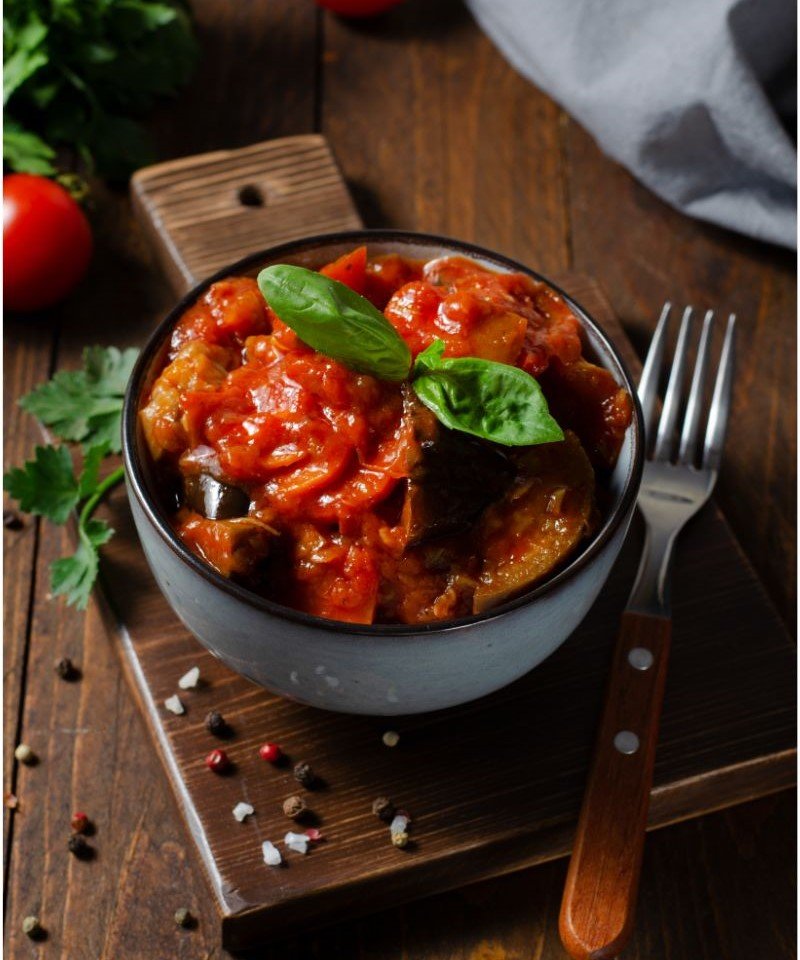Introduction to Ratatouille
Ratatouille is a traditional Provençal dish that epitomizes the vibrant flavors and agricultural bounty of Southern France. Originating from the region of Provence, this rustic vegetable stew has evolved from its humble beginnings into a symbol of French culinary heritage. While its exact origins are somewhat nebulous, it is believed to have been created by peasant cooks who sought to make use of an array of seasonal vegetables harvested from their gardens. The name “ratatouille” itself is derived from the French word “touiller,” which means to stir, reflecting the dish’s method of preparation.
Historically, ratatouille is thought to have emerged in the late 18th century. Its roots can be traced to simple farmers’ meals that combined regional produce such as eggplant, zucchini, tomatoes, onions, and bell peppers. Over time, ratatouille has garnered a reputation for its rich and harmonious meld of flavors, often featuring herbs like thyme and basil that are quintessential to Provençal cooking. This beloved dish captures the essence of the Mediterranean diet, emphasizing the use of fresh, seasonal ingredients that celebrate the region’s agricultural heritage.
The significance of ratatouille in French cuisine extends beyond its deliciousness; it is an expression of the cultural emphasis on local produce and sustainable cooking practices. As Palates across the globe have become increasingly attuned to the benefits of plant-based diets, the appeal of ratatouille has only intensified. The dish is not only a staple in French households but has also taken its place on the menus of gourmet restaurants, showcasing its versatility and universal charm. The key ingredients used in traditional ratatouille not only offer a delightful array of textures and tastes, but also reflect the values of French cuisine: simplicity, freshness, and respect for quality ingredients.
Gathering Your Ingredients
To create an authentic ratatouille, it is essential to select fresh, quality ingredients that capture the essence of Provence. The primary components of this beloved dish include eggplant, zucchini, bell peppers, tomatoes, onions, and a variety of herbs such as thyme and basil. Each ingredient contributes unique flavors and textures, making the dish a vibrant celebration of summer produce.
Eggplants should ideally be firm with a shiny skin, indicating freshness. When preparing ratatouille, they can be cut into cubes or slices depending on preference. Zucchini, another critical ingredient, should also be picked when young and tender, which enhances its mild flavor. Look for zucchini that is free from blemishes or soft spots for the best results.
Bell peppers add a subtle sweetness to ratatouille. A combination of red, yellow, and green peppers not only provides a color contrast but also varying taste profiles. When shopping for bell peppers, ensure they are heavy for their size and have glossy skin. Onions, typically yellow, can be used to create a savory base that supports the other ingredients.
Tomatoes form the foundation of the dish’s sauce. Roma tomatoes are often recommended due to their low moisture content and rich flavor, but any ripe, juicy tomato will suffice. It is also beneficial to recognize that using seasonal produce will enhance the overall taste of your ratatouille. If fresh vegetables are not available, consider using canned ingredients, particularly tomatoes, which can serve as a good alternative.
Lastly, fresh herbs are indispensable for imparting authentic flavor. Thyme and basil are traditional choices, but various herbs may be incorporated depending on personal preference. By choosing high-quality, fresh ingredients, you are setting the stage for a delectable ratatouille that truly embodies the spirit of French cuisine.
Step-by-Step Cooking Instructions
To prepare an authentic ratatouille, begin by gathering the necessary ingredients and kitchen tools. You will need a sharp knife, cutting board, sauté pan, and a large pot for simmering. Essential ingredients include fresh vegetables such as zucchini, eggplant, bell peppers, tomatoes, onions, and garlic.
Start by washing and drying all your vegetables. Chop the eggplant into 1-inch cubes and allow it to sit for approximately 30 minutes with some salt to draw out excess moisture and bitterness. After 30 minutes, rinse the eggplant and pat it dry with a paper towel.
Next, finely dice the onions and garlic. In your sauté pan, heat two to three tablespoons of olive oil over medium heat. Add the diced onion and garlic, sautéing them until they become translucent and fragrant, typically five to seven minutes. This combination forms the aromatic base for your ratatouille.
While the onion and garlic are sautéing, chop the zucchini and bell peppers into similar-sized pieces, roughly 1-inch cubes. After the onions and garlic have reached the desired color, add the bell peppers first, as they require a slightly longer cooking time. Stir occasionally, cooking for about five minutes until they begin to soften.
Then, incorporate the zucchini and sauté for an additional five minutes. Add the previously prepared eggplant and cook for another ten minutes, keeping the heat at medium to prevent sticking. Once all the vegetables are tender, add diced tomatoes, along with herbs such as thyme and rosemary if desired. Season with salt and pepper to taste.
Reduce the heat to low, cover the pan, and let the ratatouille simmer for approximately 30 minutes, allowing the flavors to meld. Stir occasionally to ensure even cooking. The final dish should showcase beautifully tender vegetables that maintain their shape, offering a vibrant, hearty stew that embodies the essence of Provence.
Serving Suggestions and Variations
Ratatouille, a quintessential dish from Provence, is rich in flavors and versatility, making it an ideal accompaniment for various meals. One popular way to serve ratatouille is alongside crusty bread. The bread serves to soak up the luscious juices of the ratatouille, providing a satisfying texture contrast and enriching the overall dining experience. This combination not only enhances the flavors but also complements the Mediterranean essence of the dish.
For a heartier meal, consider serving ratatouille over rice or pasta. The vibrant vegetables meld seamlessly with both options, allowing each ingredient’s unique flavor to shine. The rice provides a neutral base, while pasta offers a comforting twist, creating a filling dish perfect for lunch or dinner. Additionally, ratatouille can be paired as a flavorful side dish to grilled or roasted meats and fish, offering a fresh counterpoint to richer proteins.
In terms of variations, there are numerous creative ways to adapt the traditional ratatouille recipe. Experimenting with different herbs and spices can yield exciting results; for example, incorporating fresh basil and thyme can deepen the aromatic profile. Alternatively, smoked paprika or chili flakes can add a touch of heat for those who prefer a spicier version. Moreover, cooking methods play a crucial role in the final outcome. Roasting the vegetables can intensify their natural sweetness and add a delightful caramelization, while grilling can impart a unique smoky flavor.
Ratatouille can also be repurposed in other culinary creations. One exciting idea is to transform leftover ratatouille into a savory tart or utilize it in a hearty stew. These variations ensure that you can enjoy the rich flavors of Provençal cuisine in multiple forms, enhancing the overall dining experience while minimizing food waste.


